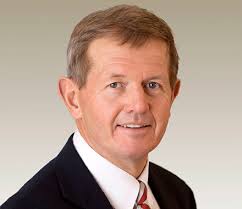
First-quarter figures paint a rosy picture for four leading Nordic banks, but low rates and rising asset prices could be inflating a household debt bubble and storing up problems in the seemingly unlikely event of an economic downturn. Figures compiled by SNL Financial show loans and deposits growing year over year, operating income rising and impairments either declining, extraordinarily low or both. Cost-to-income ratios are well below 50% and frequently declining further. Capital is strong and often strengthening, with common equity Tier 1 ratios over 15% and even 20%.
Stronger equity
Yet despite their strong and rising equity, Nordea Bank AB, Svenska Handelsbanken AB, Skandinaviska Enskilda Banken AB and Swedbank AB managed double-digit returns.What, in other words, is there not to like? One key issue evident in the figures is that the banks have high to very high loan-to-deposit ratios. Liquidity could be an issue in a (currently remote) downturn, and the banks are clearly very geared to lending growth. This looks very elevated in the mature Nordic markets at this point of the cycle and significantly outstrips GDP growth.The head of the Norwegian FSA, Morten Baltzersen, warned in January that low interest rates and strong mortgage competition could force debt and house prices upward in a «self-augmenting spiral.
IMF worries
The IMF expressed worries about Swedish household debt and house prices as long ago as July 2013. It said Sweden had to strengthen its financial stability, improve bank funding and liquidity, cut household debt and speed mortgage amortization. Yet in the meantime, interest rates have fallen and house prices have risen.
-Debt is a challenge to both economies. Both of the central banks have looked to the political and other authorities to address the matter,» UBS economist David Tinsley told SNL. In Sweden, the FSA recently tried to change the policy on amortization of [high LTV] loans, and there was a court ruling dictating that they did not have the relevant powers. … It is a big concern; household debt levels are not too far short of 200% of GDP and continuing to rise.
Might Store up problems
Speaking to SNL, Edward Firth, a bank analyst at Macquarie, agreed that the growth of the Swedish central bank balance sheet through quantitative easing and the expansion of bank lending in the region could store up problems for later.
«Unless there is a sharp rise in interest rates, which does not seem very likely in either economy, it is hard to see what is going to make the difference [to household indebtedness] short of very tough macroprudential policies,» Tinsley said, observing that from a monetary policy perspective, there had been no «push-back» on rising debt levels.
Debt Levels will Rise
By raising asset prices, in particular house prices, quantitative easing combines with low borrowing rates to further encourage Swedish or Norwegian households to raise their debt levels. With ECB QE due to last 18 months, Tinsley expected further purchases from the Sveriges Riksbank, rather than another reduction in interest rates, to weaken the Swedish krona against the euro. A reduction in Norwegian rates is on the cards for June, although the central bank has been more hawkish recently.Some macroprudential measures have been adopted, including higher risk-weighting of mortgages in both Sweden and Norway. Regulators have also suggested raising the countercyclical buffer on banks, currently at 1% in both countries, to reduce the upward march of house prices.
The Critical Issue
The critical issue for Nordic bank profits in the coming months will be their ability to manage interest margins and income. The strong first quarter was driven by a good trading performance, notably at Nordea and SEB, Citi analysts reported. Firth said: «The big thing about quantitative easing is that it trades longer-term margin erosion for short-term trading profits. We have seen that theme very evident in [first-quarter] numbers.» All four banks are also managing to improve fee income, which is a focal point for banks in Europe as a whole. Citi analysts remarked that strong trends in asset management raised fees and overall results beyond consensus expectations in the first quarter. Some have stronger fee generation than others: SEB is the most geared to fee income and Handelsbanken the least.
Depress interestincome
Lower rates depressed net interest income, however, and Citi warned that «Nordea and the Swedes face further headwinds.» Nordea has already started to charge negative deposit rates to large corporates and to test such rates with small to medium-sized businesses. Yet CEO Christian Clausen said the bank would wait and see what its competitors did before charging retail customers and that the bank would look to the asset side to improve or sustain margins.The Nordic bank boom could be coming to an end, but a bust is not in sight just yet.
This aricle is written by David Brierley and JahanZaib Mehmood Chaudhary




